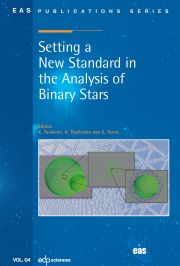Article contents
Effects of cosmic rays on hydrocarbon interstellardust
Published online by Cambridge University Press: 13 February 2013
Abstract
Hydrogenated amorphous carbons, an important component of the interstellar carbonaceousdust, possess infrared spectral signatures (at 3.4, 6.9 and 7.3 μm) thatare ubiquitous in the diffuse interstellar medium of galaxies, but not observed in denseclouds. To better understand the role played by cosmic rays in the disappearance of theseabsorption bands, irradiation experiments of hydrocarbon dust analogues have beenperformed with different swift ions. The results obtained through the in situinfrared monitoring of the samples during the irradiations allow to infer thedehydrogenation effect of the cosmic ray distribution on the interstellar hydrogenatedamorphous carbons. The importance of this interstellar dust destruction by cosmic rays isdiscussed in comparison to other energetic processes in different interstellarenvironments.
Information
- Type
- Research Article
- Information
- Copyright
- © The Author(s) 2013
References
Références
- 1
- Cited by

